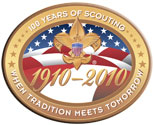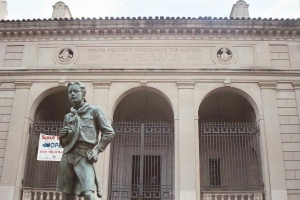Difference between revisions of "Scout Councils"
Brucejohnson (Talk | contribs) |
Brucejohnson (Talk | contribs) (→Coast Guard Auxiliary Best Practices) |
||
| Line 9: | Line 9: | ||
Councils are divided into districts with leadership provided by the district executive, district chairman, and the district commissioner. Districts are directly responsible for the operation of Scouting units and, except for the district executive, are mostly staffed with volunteers. The voting members of each district consist of volunteer representatives from each chartered organization having at least one BSA unit, plus annually elected members-at-large who in turn elect the district chairman. Boroughs and districts are subdivisions of the local council and do not have a separate corporate status. | Councils are divided into districts with leadership provided by the district executive, district chairman, and the district commissioner. Districts are directly responsible for the operation of Scouting units and, except for the district executive, are mostly staffed with volunteers. The voting members of each district consist of volunteer representatives from each chartered organization having at least one BSA unit, plus annually elected members-at-large who in turn elect the district chairman. Boroughs and districts are subdivisions of the local council and do not have a separate corporate status. | ||
| + | |||
| + | ===Units and chartered organizations=== | ||
| + | The unit is the main operating group of the BSA.<ref name="bsaorg"/> | ||
| + | Units use different names for each membership level—Cub Scouts are organized as packs, Boy Scouts as troops, Varsity Scouts as teams, Venturers as crews, and Sea Scouts as ships. | ||
| + | |||
| + | BSA's primary mission is to provide a values-based youth program that can be used by local institutions for the benefit of the youth in their community. Thus each unit is operated by a community-based organization such as a business, service organization, school, labor group, or religious institution that has applied for and received an annual charter from the BSA.<ref name="fedcharter"/><ref name="CharteredUnits">{{cite web |url=http://www.scouting.org/Media/FactSheets/02-507.aspx |title=Chartered Organizations and the Boy Scouts of America|year=2008 |publisher=Boy Scouts of America |accessdate=2008-07-01}}</ref><ref name="Cornell30902">{{cite web|url=http://www.law.cornell.edu/uscode/36/usc_sec_36_00030902----000-.html|title=Section 30902 Purposes|publisher=Cornell University Law School|accessdate=2008-07-01}}</ref> This chartered organization is responsible for selecting leadership, providing a meeting place, and promoting a good program. The chartered organization representative is the manager of Scouting in a chartered organization and serves as a liaison between the unit, the chartered organization, and the BSA. Chartered organizations use the Scouting program to support the goals and objectives of the organization. | ||
==Coast Guard Auxiliary Best Practices== | ==Coast Guard Auxiliary Best Practices== | ||
Revision as of 20:14, 22 July 2009
| The BSA program is administered through 303 local councils, with each council covering a geopolitical area that may vary from a single city to an entire state. Councils receive an annual charter from the National Council and are usually incorporated as a charitable organization. The council level organization is similar to that of the National Council. The council executive board is headed by the council president and is made up of annually elected local community leaders. The board establishes the council program and carries out the resolutions, policies, and activities of the council. Board members serve without pay and some are volunteer Scouters working at the unit level. Youth members may be selected to the council executive board according to the council by-laws. |
The Scout executive manages council operations—including finance, property management, advancement and awards, registrations, and Scout Shop sales—with a staff of other professionals and para-professionals. Volunteer Commissioners lead the unit service functions of the council, help maintain the standards of the BSA, and assures a healthy unit program.
The BSA charters two councils for American Scouts who live overseas, largely on military bases in Europe and Asia. The Transatlantic Council, headquartered in Germany, serves BSA units in much of Europe, and the Far East Council, headquartered in Japan, serves units in the western Pacific areas. The Direct Service branch makes the Scouting movement available to U.S. citizens and their dependents living in countries outside these jurisdictions or in isolated areas. The Aloha Council in Hawaii also serves BSA units in the American territories of American Samoa, Guam, the Northern Mariana Islands and in the sovereign countries of the Federated States of Micronesia, the Marshall Islands, and Palau.
The Greater New York Councils are unique in that they are divided into five boroughs with each led by a borough Scout executive. Each borough is then divided into districts.
Councils are divided into districts with leadership provided by the district executive, district chairman, and the district commissioner. Districts are directly responsible for the operation of Scouting units and, except for the district executive, are mostly staffed with volunteers. The voting members of each district consist of volunteer representatives from each chartered organization having at least one BSA unit, plus annually elected members-at-large who in turn elect the district chairman. Boroughs and districts are subdivisions of the local council and do not have a separate corporate status.
Units and chartered organizations
The unit is the main operating group of the BSA.<ref name="bsaorg"/> Units use different names for each membership level—Cub Scouts are organized as packs, Boy Scouts as troops, Varsity Scouts as teams, Venturers as crews, and Sea Scouts as ships.
BSA's primary mission is to provide a values-based youth program that can be used by local institutions for the benefit of the youth in their community. Thus each unit is operated by a community-based organization such as a business, service organization, school, labor group, or religious institution that has applied for and received an annual charter from the BSA.<ref name="fedcharter"/><ref name="CharteredUnits">Template:Cite web</ref><ref name="Cornell30902">Template:Cite web</ref> This chartered organization is responsible for selecting leadership, providing a meeting place, and promoting a good program. The chartered organization representative is the manager of Scouting in a chartered organization and serves as a liaison between the unit, the chartered organization, and the BSA. Chartered organizations use the Scouting program to support the goals and objectives of the organization.
Coast Guard Auxiliary Best Practices
- ?
- ?
- ?
- ?
- ?

